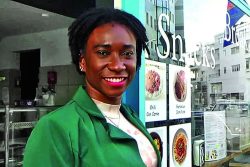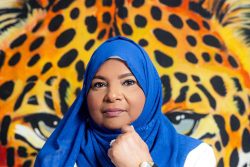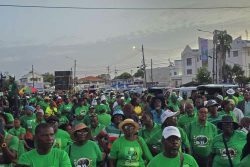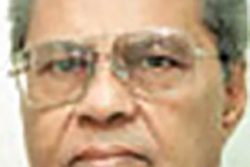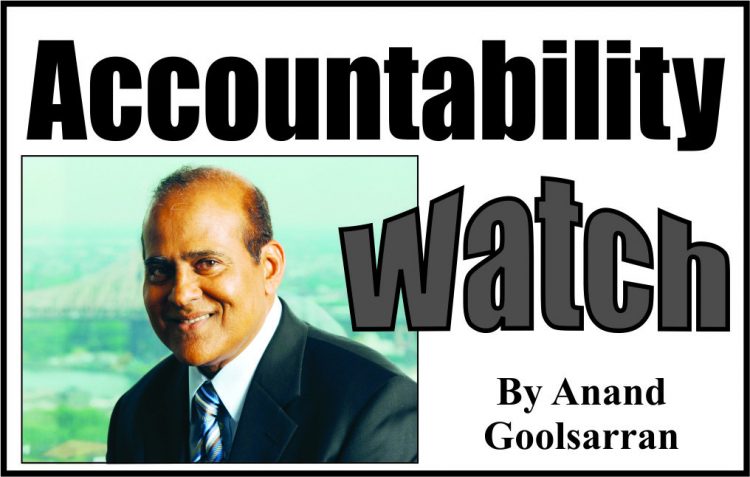 Three weeks ago, Suriname held its national elections under a system of proportional representation. Previous elections were held under a constituency-based system involving 10 districts, similar to that of most CARICOM countries. Electors cast their votes for political parties to be represented in the 51-member National Assembly. To form the government, 26 seats are needed, representing the threshold for the majority of the votes cast. The concept of a minority government does not exist, and should no party win the majority of the votes cast, a coalition government has to be formed after the election results are announced.
Three weeks ago, Suriname held its national elections under a system of proportional representation. Previous elections were held under a constituency-based system involving 10 districts, similar to that of most CARICOM countries. Electors cast their votes for political parties to be represented in the 51-member National Assembly. To form the government, 26 seats are needed, representing the threshold for the majority of the votes cast. The concept of a minority government does not exist, and should no party win the majority of the votes cast, a coalition government has to be formed after the election results are announced.
The President is elected by the Assembly with the approval of a two-thirds supermajority, that is, the votes of at least 34 members. However, should the Assembly fail to reach an agreement after two attempts, then the elected district representatives along with the 51 members of the Assembly will elect the President. An elector is allowed to vote twice on separate ballot papers: one for the party to send representatives to the Assembly and the other for the person to serve as a district representative.
The above arrangements ensure that the government in place commands the support of the majority of electors, while the President must enjoy the confidence of most of the members of the Assembly regardless of the parties to which they belong.
Unlike Suriname, the Guyana government is formed by the political party that garners the most votes, notwithstanding that the party might not have obtained a majority of the votes cast; and the presidential candidate from that party becomes the president. Considering that the two main political parties derive their support overwhelmingly from the two ethnic groups – the PPP/C from Indo-Guyanese and the PNC/R from Afro-Guyanese – coupled with the “winner takes all” practice, the party that loses the elections is excluded from executive decision-making and participation in the management of the affairs of the State. In these circumstances, supporters of the losing party tend to feel marginalized and discriminated against, especially as regards government hiring and contract awards. While theoretically the political opposition has a voice in Assembly and can influence government policies, its views are largely ignored because individual Members of Parliament take positions along party lines, instead of after careful examination of the facts and pertinent arguments in support of, or against, a particular proposal under consideration by the Assembly. In other words, taking positions on the basis of one’s conscience does not exist. Little wonder that around election time there is always political and ethnic unease. This is why we have argued on several occasions about the need for a system of shared governance or some form of power sharing. We need to reflect on the ethnic composition of the Guyanese society, the voting pattern of the electorate over the last 63 years, and the political and ethnic tensions every five years around election time. These factors have stymied real development of the country and therefore we need to find solutions that are unique to our situation.
Suriname’s elections results
A total of 14 political parties contested the 2025 elections, including the two major political parties – Progressive Reform Party (VHP) led by Chandrikapersad Santokhi, and National Democratic Party (NDP) led by Dr. Jennifer Geerlings-Simons. The latter has a multi-racial support and was founded in 1987 by Dési Bouterse. The VHP derives its support mainly from Indo-Surinamese and was founded by Jaggernath Lachmon in 1947.
The VHP and the NDP won 17 and 18 seats in the Assembly, respectively, with the other smaller parties capturing the remaining 16 seats. According to the Electoral Observation Mission of the Organization of American States, the elections were well-organized, peaceful and successfully conducted, mainly due to the good work of the members of the polling stations, police officers and of all the electoral officials. The Mission welcomed the change of the electoral system from a 10-district constituency system to a single national constituency and referred to the 2022 decision of the Constitutional Court that ruled that ‘the previous regulations violated the constitutional principles of equality and non-discrimination’.
Likely formation of a new coalition government
The newly elected Assembly is expected to meet on 16 June to vote for the presidency after the election results are confirmed. Since neither of the two major parties was able to obtain the required number of seats to form the government, a coalition government with some or all of the smaller parties that have won seats has to be formed. In this regard, six days after the elections, the five of the smaller parties that won seats in the Assembly signed a coalition agreement with the leader of the NDP to form the government, should she be elected President. Three of these parties were initially members of the Santokhi Administration but left at various points because of differences in policy matters, allegations of corruption and drug trafficking.
In a joint press conference, the leaders of each party pledged to put differences aside for the benefit of the national interest. Dr. Geerlings-Simons, for her part, stated that the coalition would work together on ‘a new model in which the wealth given by God benefits everyone’ in reference to oil revenues expected to accrue to the nation. If elected, she will be the first woman President of Suriname.
The coalition agreement essentially provides for the sharing of ministerial portfolios among the six coalition members, with six key ministries going to the NDP, including Finance and Planning, Foreign Affairs, Public Works, and Agriculture. The other five members will share the remaining eleven portfolios in proportion to their standing in the elections. Of course, the presidency will go to the NDP.
Oil discovery
Since 2019, Suriname has discovered major offshore oil and gas. It is set to become a major hydrocarbon producer. In total, there are almost 2.5 billion barrels of crude oil reserves and around 17 trillion cubic metres of natural gas within Suriname’s territory. An estimated 750 million barrels of oil reserves in its largest offshore block are currently under development. Production is expected to begin in 2028, with an output of approximately 220,000 barrels per day. The gas reserves are greater than those of either Brazil or Mexico, and production is expected to start in 2032 with 550 million cubic metres per day of natural gas.
Suriname has established a sovereign wealth fund, known as the Savings and Stabilization Fund Suriname (SSFS), to help protect the country against price shocks, especially as regards revenues from mining that have fluctuated substantially over the years. According to the draft legislation, the SSFS refers to ‘the wealth of a whole nation and belongs to the people of the country, living now and in the future. This is precisely the goal of the [SSFS]: to save for future generations. And we have one more goal: to stabilize the fiscal revenues of the government. In fact, these goals go hand in hand’. The draft legislation incorporates comments from all stakeholders, is consistent with the best international practice, and contains wide-ranging transparency requirements.
In November 2024, President Santokhi announced a “Royalties for Everyone” programme through which each citizen would receive $750 in a savings account with an annual interest rate of 7 percent from income earned from the Gran Morgu oilfield. He also made progress in reducing the country’s debt burden and annual inflation rates. In 2020, Suriname’s debt-to-GDP ratio was 146.4 percent. That figure has since declined to 86.6 percent. Similarly, inflation was 59.1 percent in 2021 but has since it slowed to 8.7 percent in 2025. However, cuts to fuel and electricity subsidies as a result of austerity measures imposed by the International Monetary Fund, sparked protests in early 2023 and contributed to Santokhi’s low approval rating and his impending relegation to the opposition benches.



